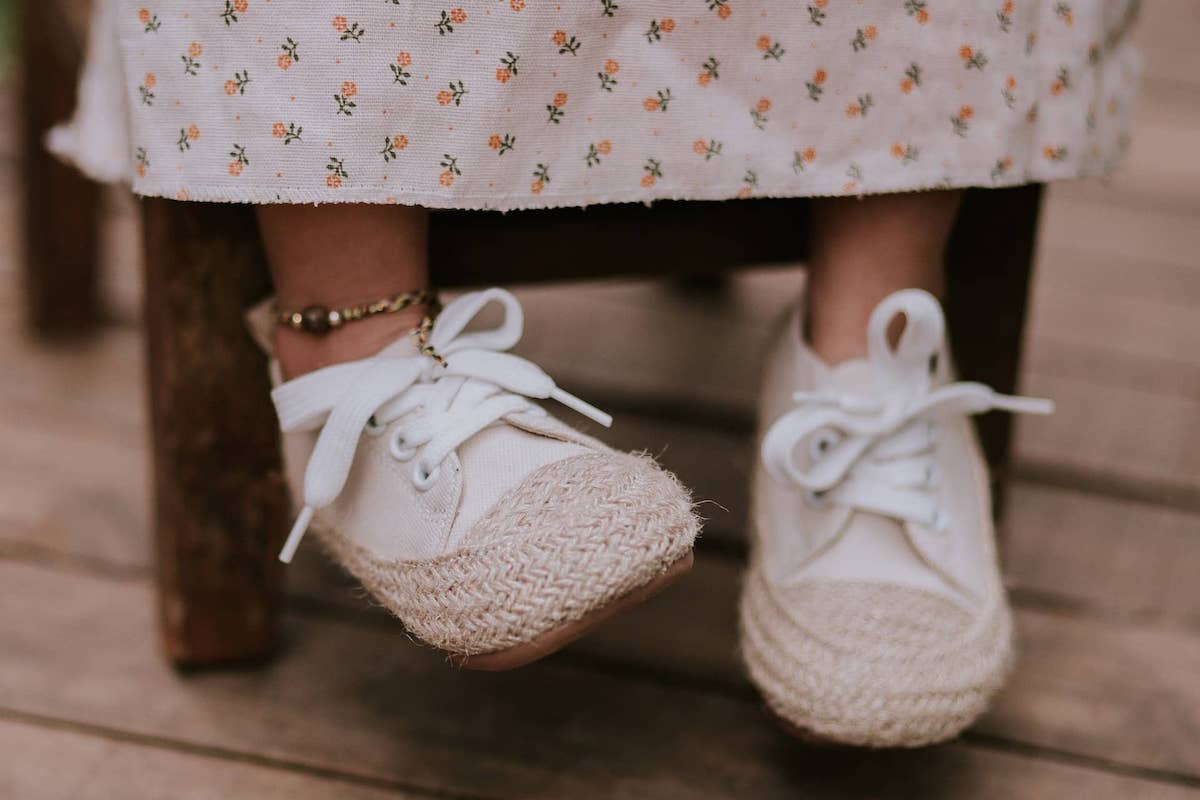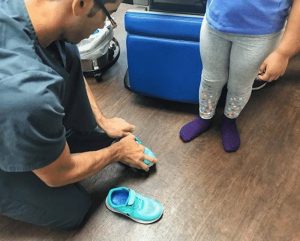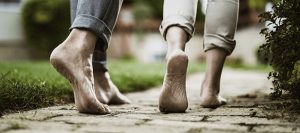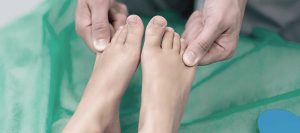
Foot and ankle problems aren’t just for grown-ups. Children can and do develop issues with the mechanics of their feet or other orthopedic (bone-related) issues, also known as pediatric foot conditions.
Most childhood foot and ankle conditions resolve themselves as a child grows.
However, other pediatric foot conditions can cause problems that should be addressed by a trained podiatric professional to avoid further complications.
So we’ve compiled some of the most common foot and ankle conditions found in children, with brief descriptions as well as links to more on each subject.

Most children aren’t born with arches in their feet. Instead, they tend to develop arches as they grow. But some kids’ arches never fully develop, leaving them with “flat feet.”
Understandably, parents who notice flat feet in their child may be concerned that they will have mobility problems or difficulty playing sports.
This is not usually the case, and we can typically address whatever issues do arise with orthopedic shoe inserts.
If the child’s condition becomes painful or if it becomes apparent that the child is having problems with their stride, a visit to the podiatrist advised.
As toddlers get the hang of walking, many of them walk on their toes. Usually, children grow out of this practice, but some continue to walk on their toes well after they’ve learned to stand upright and walk.
Children who appear to still be walking on their toes most or all of the time at that point should see a podiatrist.
Persistent toe walking may be an indication of more serious medical conditions, such as cerebral palsy, muscle weakness disorders, autism, or other nervous system problems.
In-toeing is the inward turning of a child’s feet when they walk or run. Often called “pigeon-toes,” this condition is prevalent among younger children still working on their gait.
However, in-toeing usually resolves itself in most children around the age of eight. Parents should consult a podiatrist if the condition persists beyond that age.
As with the conditions listed above, bowlegs are very common among infants and toddlers but usually go away as the child grows.
A child is considered bowlegged if they stand with their toes forward and their ankles together while their knees don’t touch. Kids with bowlegs rarely need treatment for their condition.
However, if your child’s bowlegs persist after the age of eight or so, consider visiting a doctor to ensure that your child isn’t suffering from other conditions that could be contributing to the issue such as vitamin D deficiency.
Get The Very Best Treatment For Pediatric Foot Conditions!
Foot and ankle problems can be painful and frustrating for adults and children alike.
At Jaws Podiatry, we are committed to resolving any such issues as quickly and as efficiently as possible, always preferring non-invasive or minimally invasive approaches when appropriate.
Please contact us today at (954) 922-7333 to schedule a consultation.

- The Life-Changing Power of Cosmetic Foot Surgery - February 27, 2023
- What Are The Most Common Pediatric Foot Conditions? - October 5, 2020
- 4 Important Things To Know Before Having Foot Surgery - September 21, 2020



